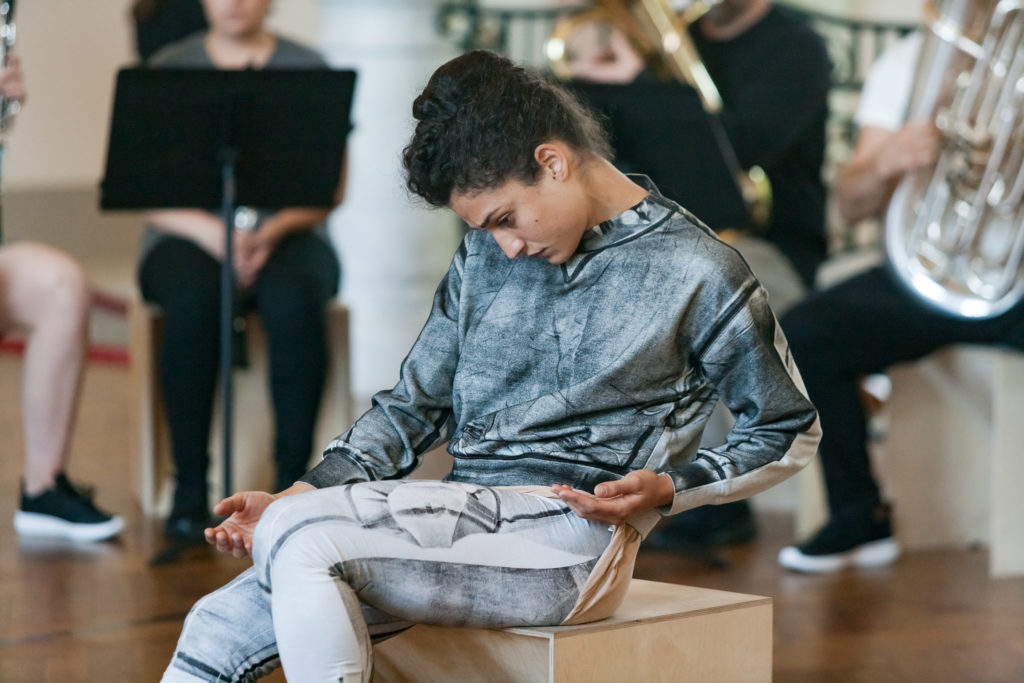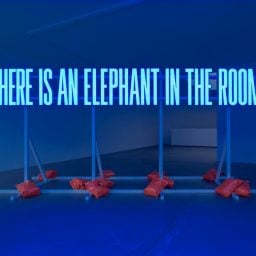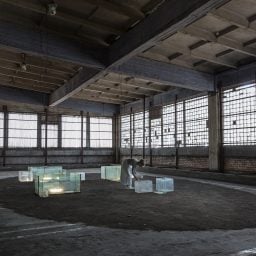On the first day of the inaugural Riga International Biennial of Contemporary Art (RIBOCA1) in Latvia, chief curator Katerina Gregos spoke about change. It was a lofty and wandering exhibition concept in many ways, but one that was grounded by a particular curiosity into the subject of irreversible transformation. As such, the title of her ambitious exhibition was “Everything Was Forever Until it Was No More.”
Neither the city nor the Latvian culture ministry was on stage for any symbolic ribbon-cuttings, making the privately-funded RIBOCA an outlier from other biennials. Founder Agniya Mirgorodskaya seems hopeful, however, that that too might change. The exhibition and its 104 artists, all living and several of international acclaim, have brought significant international attention to the country.
Speaking of change, the team of RIBOCA1, headed by Mirgorodskaya, is an all-female cast. Alongside Gregos is Danish associate curator Solvej Helweg Ovesen, assistant curator Ioli Tzanetaki, and public program curators Zane Zajančkauska and Kalnbērziņa Praz.
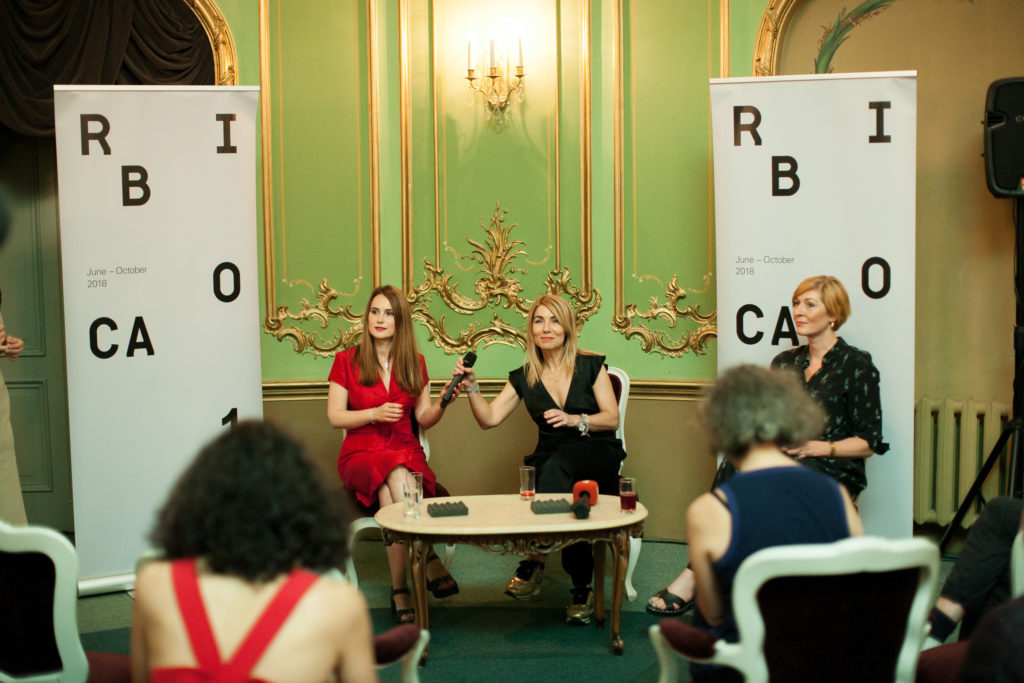
RIBOCA founder Agniya Mirgorodskaya, chief curator Katerina Gregos, and associate curator Solvej Helweg Ovesen. Photo by Didzis Grodzs. Courtesy of RIBOCA1.
Despite the large commissions, beachside previews, and a beautifully designed guidebook, RIBOCA was at its best with its sensuous, immersive, shape-shifting installations, geared toward more personal readings of urgent topics in science, technology, ecology, and economics.
Take the largest of the eight venues on the map, the former faculty of biology of the University of Latvia. The sprawling halls of the creaking 19th-century science laboratory were fitting backdrops for Norwegian artist Sissel Tolaas’s ephemeral smells—each inspired by the nearby Baltic Sea (and many of them not pleasant)—which came puffing out of Victorian-looking vessels.
One floor above, Mark Dion’s A Tour of the Dark Museum had visitors feeling around in the dark inside his mysterious installation of skeletons. In Hans Rosenström’s So Far By Now, within the empty shelves of an old library room two voices speak on the disappearance of nature: “Chestnut became chatroom; Pasture became broadband. What did we do? Well, not much.”
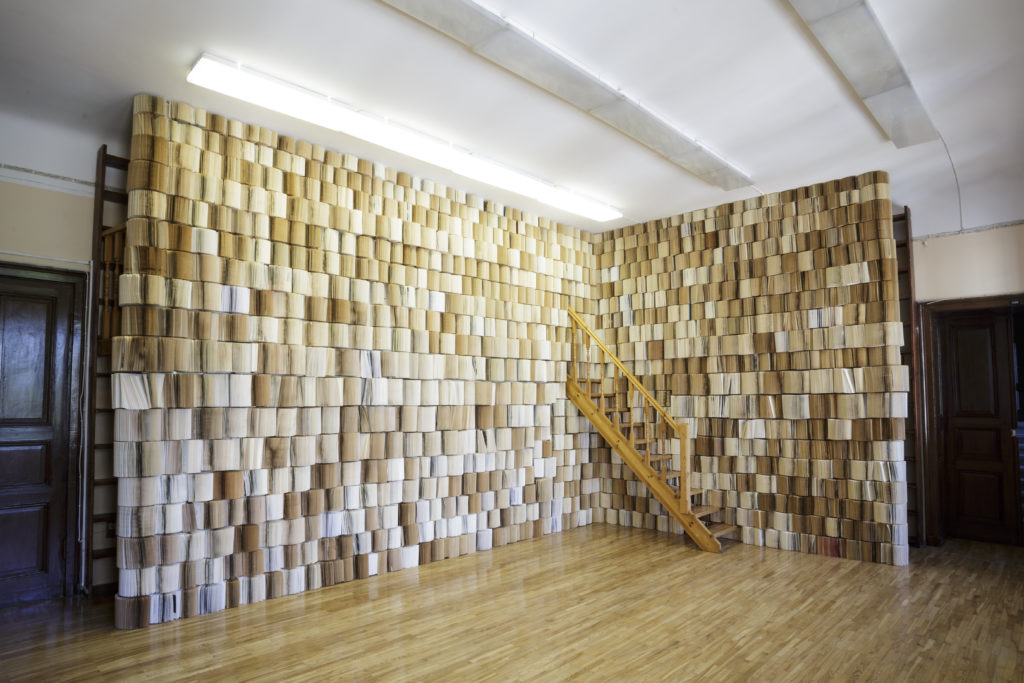
Nikos Navridis All of old. Nothing else ever… (2018). New commission for the 1st Riga Biennial. Courtesy of the artist and Bernier/Eliades Gallery, Athens/Brussels. Photo by Andrejs Strokins. Courtesy of RIBOCA1.
What else could change mean? According to Gregos’s rubric, changes are also defined by what gets mentioned and what does not. In her lengthy curatorial concept, the Brussels-based curator omits any explicit mention of feminist discourse, though it was certainly a recurring subject in the show. “We’re not trying to check all the boxes,” Gregos told press during the preview. It’s not clear whether she meant the gender division of artists, which breaks down to 38 women out of 104 participants. But the ratio felt conceptually corrected by the strong sense of feminism that swept through the show.
Most striking was the feminist revisionism of science that was quietly but provocatively interwoven throughout much of the venue, thanks largely to Swedish artist Kerstin Hamilton’s works. In The Science Question in Feminism, miniature vitrines featuring important female scientists from the region added a healthy dose of reality to the archival portraits of predominately male scientists that lined the faculty’s walls.
Swedish collaborative duo Petra Bauer and Rebecka Katz Thor had an autonomous location for And All is Yet to be Done: The Grammar of Feminist Organizing, which featured wallpaper that depicted women’s gatherings in early 20th-century Sweden. Throughout the exhibition, a feminist assembly from Nordic and Baltic organizations will appear in the space to discuss feminist organizing.
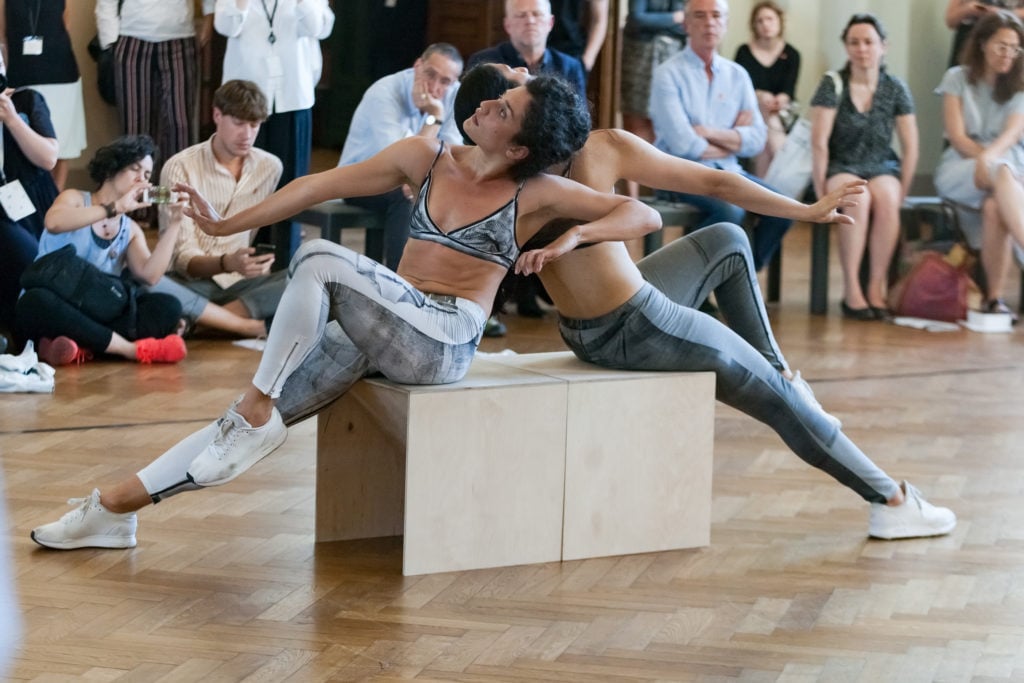
Alexis Blake performace Allegory of the Painted Woman. Photo by Juris Rozenbergs. Courtesy of RIBOCA1.
Sometimes the show’s theme highlights phenomena that haven’t changed. The former Soviet Union’s grip on Eastern Europe, for instance, is still firmly felt. At the residence of Kristaps Morbergs, an early 20th-century Latvian patron, Tallinn-based artist Liina Siib set up bellowing jazz music to explore the late-1960s trend of US jazz musicians entering the USSR to play in Estonia.
Meanwhile, a 2016 video work by Chechnyan artist Aslan Gaisumov, People of No Consequence, observes 119 Chechen and Ingush deportees from 1944 file into a meeting hall for a gathering the artist had arranged himself. Some 74 years later, they sattogether without speaking a word.
There was some early suspicion lurking at the inception of RIBOCA two years before. The fact that the the biennial was established with non-Latvian money from Mirgorodskaya’s father, who owns a Russian fishing business, was categorically worrying for a country that exists in the shadow of Russia’s aggressive foreign policy. Today, almost a third of Latvia’s population is Russian-speaking, which has added to the mounting of tension since Vladimir Putin annexed Crimea from Ukraine in 2014.
But that suspicion feels barely detectable now. By the end of the preview days, it seemed that Latvians and other Baltic attendees were convinced that RIBOCA is a good thing. “We are pleased to see that the number and scale of international events organized by the non-governmental sector is on the rise,” Dace Vilsone, State Secretary of Ministry of Culture, when asked for comment on the first Riga Biennial.
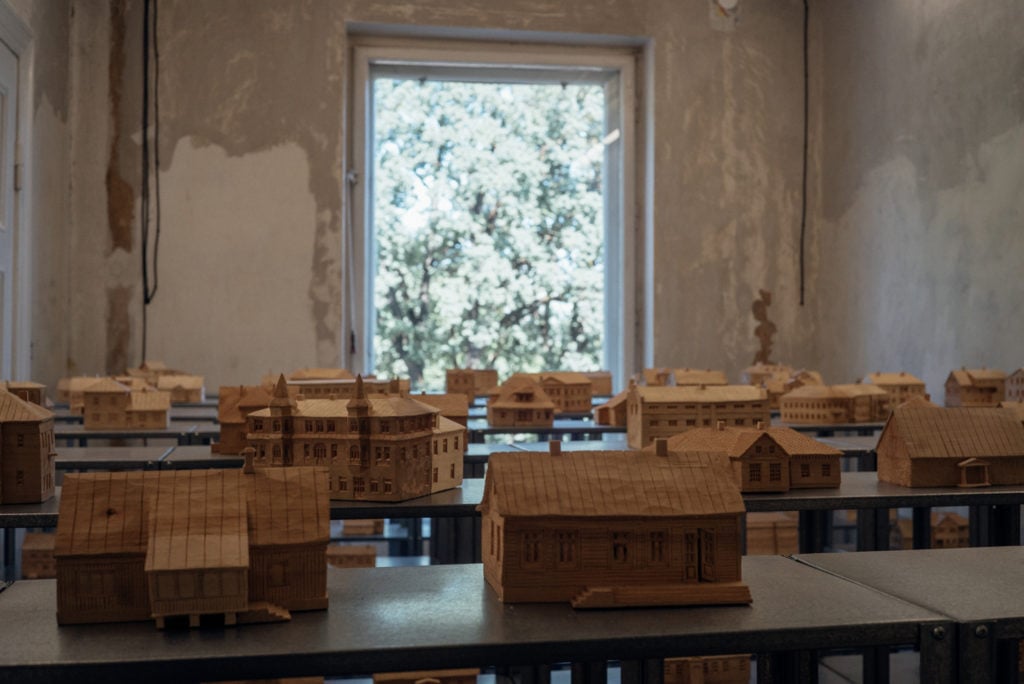
Indrė Šerpytytė at the former residence
of Kristaps Morbergs. Photo by Pēteris Vīksna. RIBOCA1: ‘Everything Was Forever, Until It Was No More’ in Riga, Latvia, 2 June – 28 October 2018, rigabiennial.com
Gregos and her team set a high bar for future iterations of the biennial. All of the artists we spoke to, whether they were Latvian, Baltic, female, international, or otherwise, were outwardly happy to be there. They tended to speak of the high competence, care, and criticality taken by the team, and specifically the level of financial support they received for their projects.
“Artists need to be paid,” Gregos said in her welcoming address, receiving a round of applause. “They need to be properly treated.”
So what should change look like for the art world? Happy, fairly paid artists for one thing. The rest can follow.
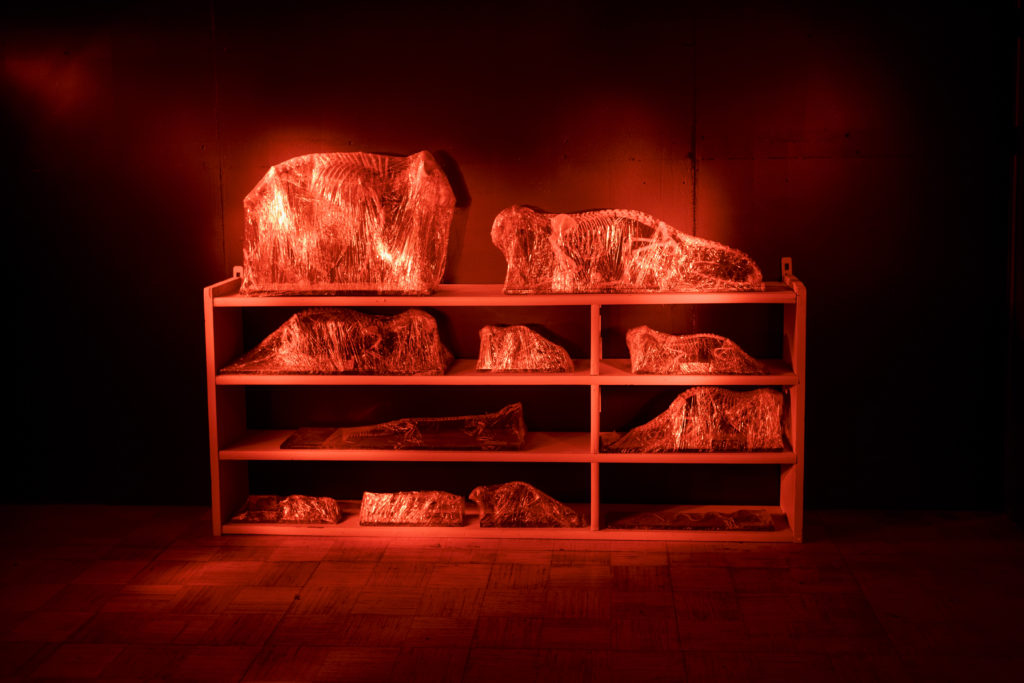
Mark Dion, A Tour of The Dark Museum (detail) (2018). The Former Faculty of Biology of the University of Latvia. New commission for the Riga Biennial. Courtesy of the artist and Waldburger Wouters, Brussels. Photo by Andrejs Strokins.
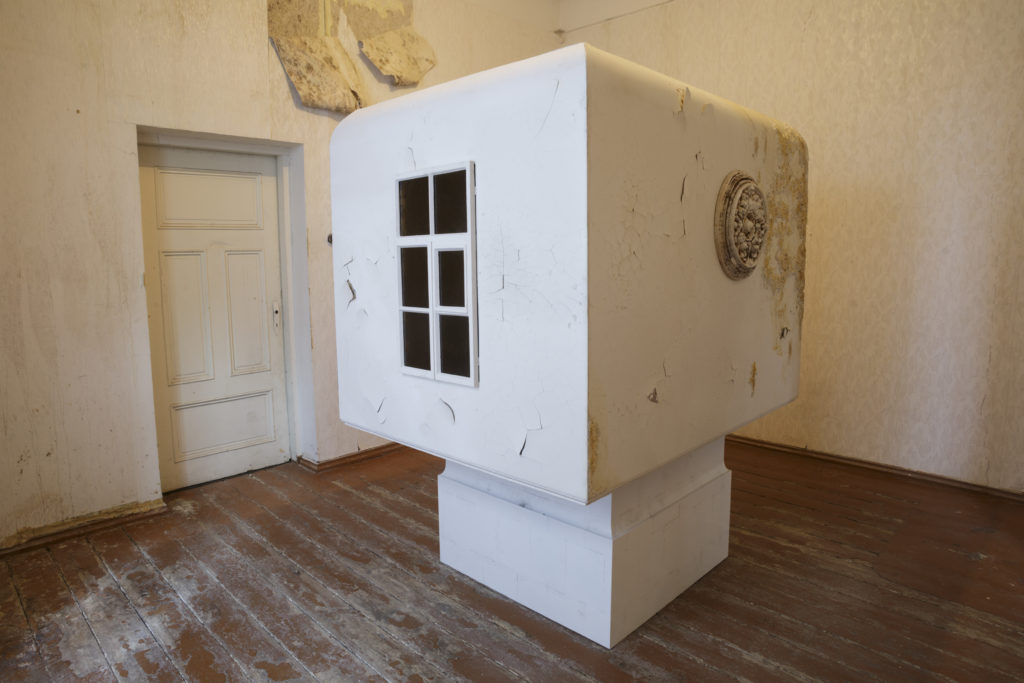
Augustas Serapinas, The Occupier (2018). Residence of Kristaps Morbergs. New commission for the 1st Riga Biennial. Courtesy of the artist, Emalin, London and
Apalazzo Gallery, Brescia. Photo by Andrejs Strokins.
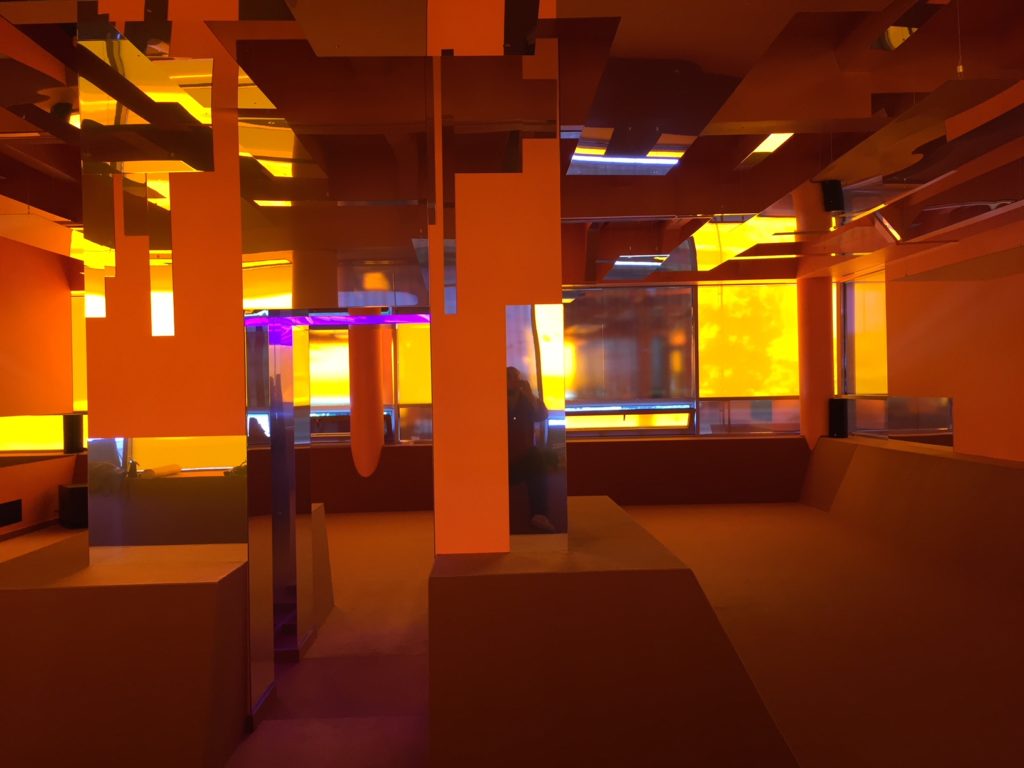
Viron Erol Vert’s Ambereum at Dubultu Art Station at RIBOCA1.

Installation view at RIBOCA1.
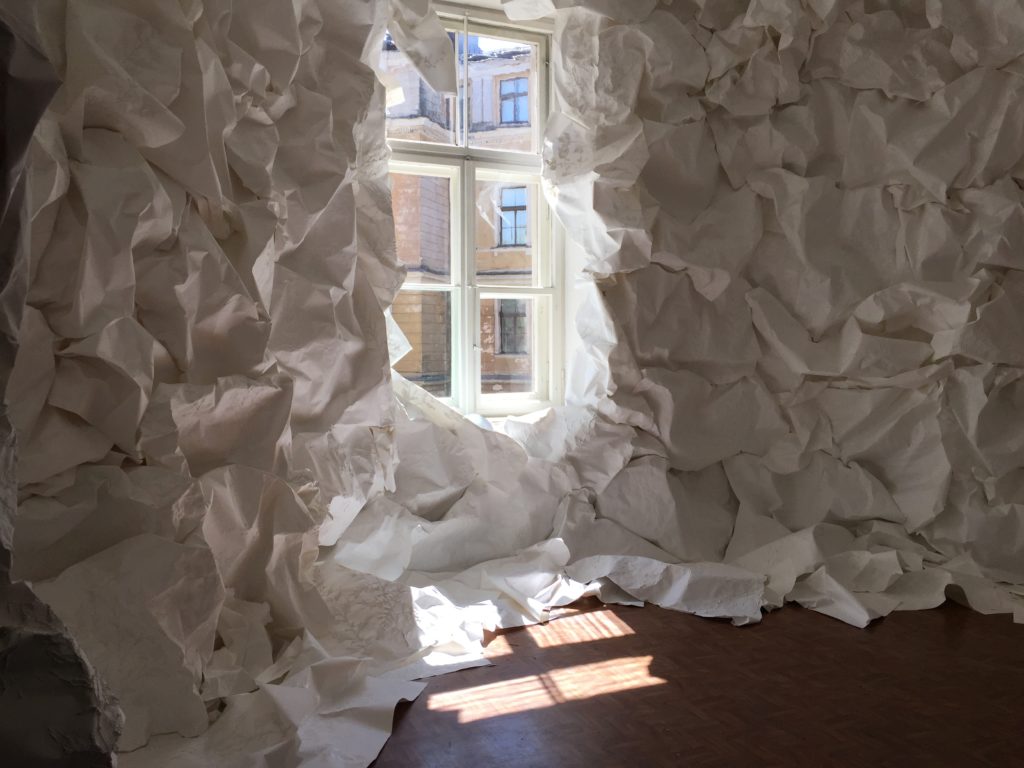
Teemu Korpela, Disposition 1 (2018) at RIBOCA1.
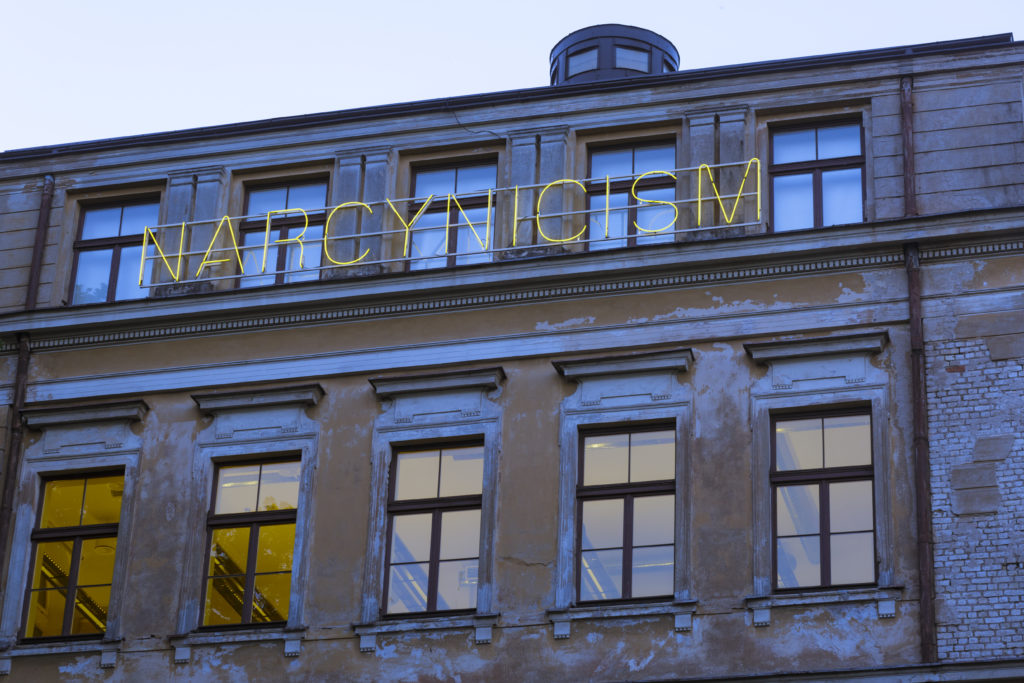
Annaïk-Lou Pitteloud, Neo-Logos (2017-18) at RIBOCA1.
